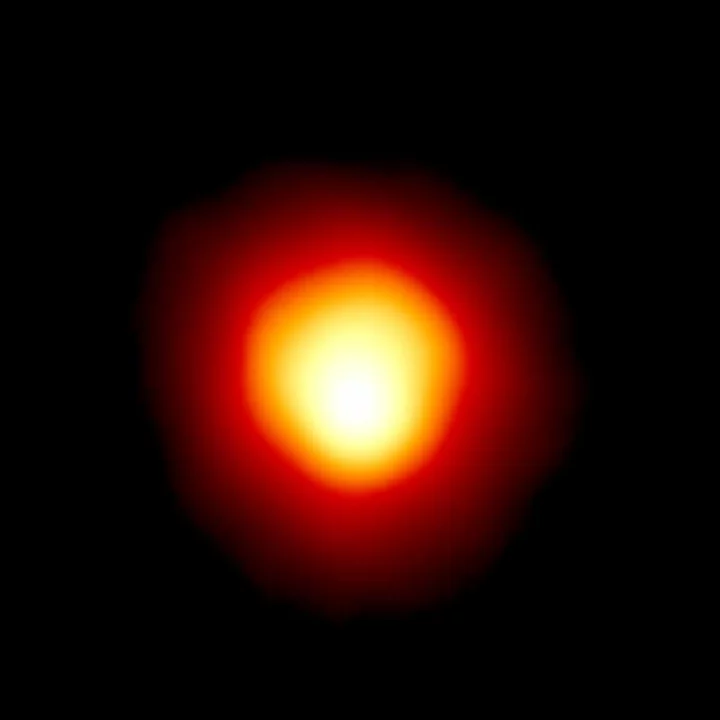The colossal star Betelgeuse — so giant that it would reach to Jupiter in our solar system — is on the highway to collapsing under its own weight and creating a blast so bright, it would outshine even the moon in our night sky.
Although some hype up Betelgeuse's looming doom, its coming explosion, called a supernova, might not happen for at least tens of thousands of years, if not more like some 100,000. The star particularly excited the astronomy community in late 2019 and early 2020 when it visibly and drastically dimmed by some 60 percent, an episode dubbed the "Great Dimming Event (GDE)." Could this have been a precursor to the star's mighty collapse?
No, it wasn't. Rather, scientists suspected that Betelgeuse, a young, chaotic, roiling star that's rapidly evolving, heaved a hunk of its gaseous atmosphere into space in 2019. This gas cooled, ultimately condensing into dust that, for months, blocked some of the red giant's light from reaching us. Betelgeuse returned to normal brightness in the spring of 2020. Now, newly released views of Betelgeuse before, during, and after the dimming event confirms this theory.
"In this glowing Picture of the Week, astronomers have shed new light on how Betelgeuse became darker, confirming that the GDE wasn’t a precursor to a spectacular supernova after all — sorry!" the European Southern Observatory (ESO), a collaborative science organization of European nations, said in a statement.
The research was recently published in the peer-reviewed journal Monthly Notices of the Royal Astronomical Society.
SEE ALSO: NASA spacecraft flies right through sun explosion, captures footageAstronomers viewed Betelgeuse at the ESO's Very Large Telescope observatory in the high Chilean mountains, specifically capturing images using an infrared instrument called MATISSE, which views light gathered from the observatory's big telescopes in infrared wavelengths. We can't see this light with the naked eye, but instruments like MATISSE and the James Webb Space Telescope are equipped to view these longer light wavelengths.
In the image below from the observatory, you see two views of Betelgeuse. The top row shows the star's surface (photosphere). Interestingly, in the infrared view Betelgeuse's surface brightens during the dimming event, because the dust ultimately glows in this light. The second row follows the molecule silicon monoxide, which helps create dust grains. The observations of the star's surface and the presence of silicon monoxide are consistent with Betelgeuse blowing a chunk of atmosphere into space and creating a large dust cloud, the ESO explained.
Two newly released views of Betelgeuse confirm why the star suddenly dimmed a few years ago. Credit: ESO / J. Drevon et al.Want more science and tech news delivered straight to your inbox? Sign up for Mashable's Light Speed newsletter today.
It takes some of the world's most powerful telescopes to see this level of detail on a star some 640 light-years away. "Betelgeuse’s size on the sky is similar to that of a 1 euro coin seen from 100 km away," the ESO wrote. "The VLTI combines the light of several telescopes to create a much larger 'virtual' telescope that can discern small structures on Betelgeuse. Thanks to this, we can witness in detail how this massive star ages and evolves."
Betelgeuse, a conspicuous red star in the night sky, has awed humanity for thousands of years. We'll be watching as it evolves, and one day, eventually, explodes.









